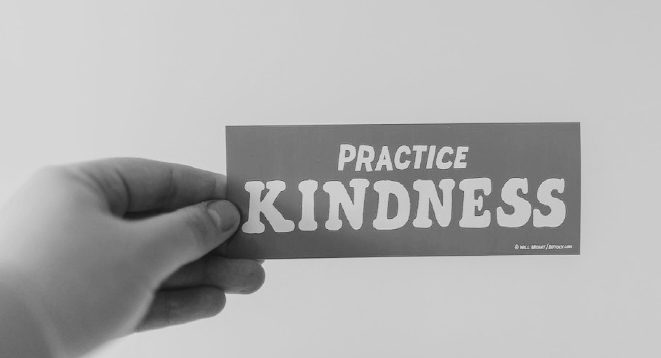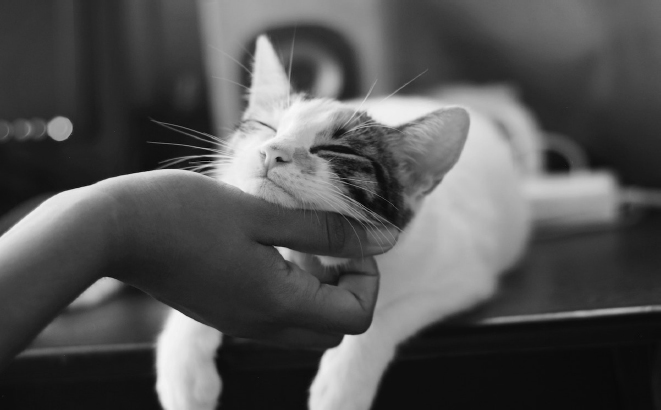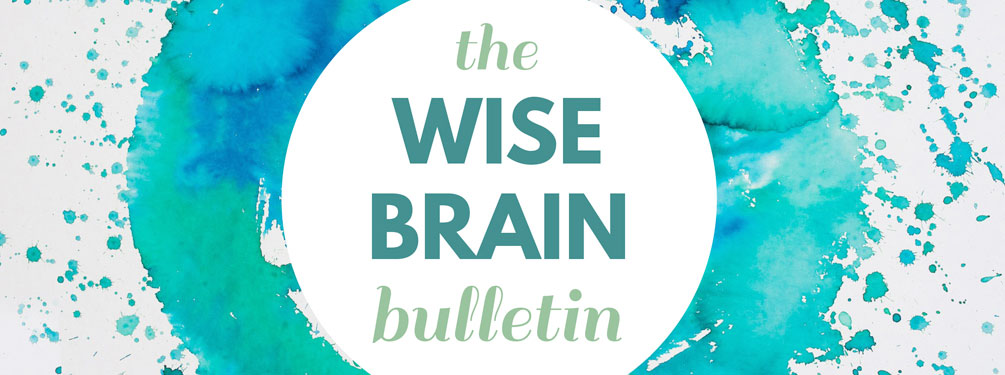News and Tools for
Happiness, Love, and Wisdom
volume 12.2 • 2018
In This Issue
Becoming Resilient: Growing an Unshakable Core of Calm, Strength, and Happiness
© 2018 Rick Hanson, PhD
Excerpted from Resilient: How to Grow an Unshakable Core of Calm, Strength, and Happiness by Rick Hanson, PhD. Reprinted by arrangement with Random House.
There’s a fundamental idea in psychology and medicine that the path your life takes depends on just three causes: how you manage your challenges, protect your vulnerabilities, and increase your resources. These causes are located in three places: your world, your body, and your mind. When you combine the causes and the places, there are nine ways to make your life better.
All of these are important, but growing resources in the mind has a unique power. It offers the greatest opportunity, since you usually have more influence over your mind than over your body or world. It also offers the greatest impact, since you take your mind with you wherever you go. You can’t always count on the world, other people, or even your own body. But you can count on durable inner strengths hardwired into your nervous system – and this book is about growing them.
Mental resources like determination, self-worth, and kindness are what make us resilient: able to cope with adversity and push through challenges in the pursuit of opportunities. While resilience helps us recover from loss and trauma, it offers much more than that. True resilience fosters well-being, an underlying sense of happiness, love, and peace. Remarkably, as you internalize experiences of wellbeing, that builds inner strengths, which in turn make you more resilient. Well-being and resilience promote each other in an upward spiral.

The key is knowing how to turn passing experiences into lasting inner resources built into your brain. This is positive neuroplasticity, and in the excerpt below, I’ll show you 6 ways to use it to grow resilient well-being.
THE IMPORTANCE OF LEARNING
Any kind of growth or personal development requires a very fundamental skill: Learning.
The Growth Curve
Greetings
The Wise Brain Bulletin offers skillful means from brain science and contemplative practice – to nurture your brain for the benefit of yourself and everyone you touch.
The Bulletin is offered freely, and you are welcome to share it with others. Past issues are posted at http://www.wisebrain.org/tools/wise-brain-bulletin.
Rick Hanson, PhD, edits the Bulletin. Michelle Keane is its managing editor, and it’s designed and laid out by the design team at Content Strategy Online.
To subscribe, go to http://www.wisebrain.org/tools/wise-brain-bulletin.
Going on a long hike, we need to bring food and other supplies. Similarly, on the road of life we need psychological supplies such as compassion and courage. How do we get these supplies into the neural “backpack”?
We do it by learning. This is a broad term that goes far beyond memorizing multiplication tables. Any lasting change of mood, outlook, or behavior requires learning. From childhood onward, we learn good habits, character strengths, and skillful ways to interact with others. Healing, recovery, and development are forms of learning as well. About a third of our attributes are innate in our DNA, while the other two-thirds are acquired through learning. This is very good news, since it means we have great influence over who we become, who we learn to be. Suppose you would like to be calmer, wiser, happier, and more resilient. Having read many comic books as a kid, I think of these inner strengths as sort of like superpowers.
Learning is the superpower of superpowers, the one that grows the rest of them. If you want to steepen your growth curve in life, it pays to learn about learning.
Any kind of learning involves a change in neural structure or function. These changes occur in two stages, which I call activation and installation. In the first stage, activation, there is an experience such as feeling liked. All experiences – all thoughts, sensations, daydreams, worries, and anything else passing through awareness – are based on underlying neural processes. A particular experience is a particular state of mental/neural activity. Then in the second stage, installation, this experience is gradually consolidated in long-term storage in the brain. Over time, passing states become installed as lasting traits. (I’m using the term “trait” broadly.)
There’s a saying in brain science based on the work of Donald Hebb: neurons that fire together, wire together.The more they fire together, the more they wire together. In essence, you develop psychological resources by having sustained and repeated experiences of them that are turned into durable changes in your brain. You become more grateful, confident, or determined by repeatedly installing experiences of gratitude, confidence, or determination. Similarly, you center yourself increasingly in the Responsive, green zone – with an underlying sense of peace, contentment, and love – by having and internalizing many experiences of safety, satisfaction, and connection.
The Essence of Self-Reliance
This is the fundamental “how-to” of healing, training, and personal growth. You can apply it to developing interpersonal skills, motivation, peace of mind, or anything else you want inside yourself. It’s the essence of self-reliance. Even the most fulfilling situations, occupations, and relationships may change. Sooner or later, one way or another, the bottom could fall out. But whatever you have inside yourself is with you always. Just like you can’t unlearn how to ride a bicycle, you won’t unlearn the inner strengths you grow over time. And the harder your life is and the less support you’re getting from external sources, the more important it is to look for those little opportunities each day to highlight a useful or enjoyable experience and consciously take it into yourself
Unfortunately, this process of deliberately internalizing beneficial experiences is rarely taught explicitly. In schools, workplaces, and trainings, people are instructed in various things – but they’re not usually taught how to learn.
When you learn how to learn, you gain the strength that builds the other strengths of resilient well-being.

HEAL Yourself
You can guide the structure-building processes of your brain in four steps, which I summarize with the acronym HEAL:
Activation
1. Have a beneficial experience: Notice it or create it
Installation
2. Enrich it: Stay with it, feeling it fully.
3. Absorb it: Receive it into yourself.
4. Link it [optional]: Use it to soothe and replace painful, harmful psychological material.
The first step of HEAL is the activation phase of learning. You start with a useful or enjoyable experience of some kind. The rest of HEAL is the installation phase, in which you begin the process of turning that beneficial experience into a lasting change in your brain. The fourth step, Link, involves being aware of positive and negative material at the same time. It is optional for two reasons: the first three steps alone are sufficient for learning, and sometimes people are not yet ready to engage their negative material.
HOW YOUR CHILDHOOD EXPERIENCES SHAPE YOU
Your experiences as a child make a big impact on your own sense of autonomy, and how it affects your relationships.
I was isolated and withdrawn as a child, and much of the time it felt like I was observing people from a great distance, as if I were on the outside of a restaurant window looking in, watching people talking and laughing together. I could see but not touch, hear but not speak. It took me a long time to get up the nerve to come in from the cold. I gradually opened up, slowly but surely knowing and being known by others, and becoming increasingly connected with them. A strong sense of autonomy – that you are your own person and make your own choices – fosters depth in our relationships. For example, when you feel grounded in your body, it’s easier to stay open to the feelings of other people. When you take care of your needs, there’s a natural receptivity to the needs of others. Knowing you can step back aids stepping in. Much as autonomy enables intimacy, intimacy supports autonomy. Close and nurturing relationships help a person feel safe and worthy as an individual, which promotes a confident independence. In a positive cycle, autonomy and intimacy feed each other. Together, they make you more resilient
The Effect of Personal History
When there is less autonomy – when a person feels overwhelmed, pushed around, or entangled with other people – there will be less intimacy, especially over time. But staying “me” when dealing with “we” can be hard to do. Ask yourself whether you’re able to maintain a comfortable sense of autonomy when others do any of these things:

- Want things from you
- Are upset with you
- Try to persuade or influence you
- Don’t respect your boundaries
- Attempt to dominate or control you
How a person reacts to challenges to autonomy depends in part on his or her temperament. There is normal variation in the priority that people place on autonomy compared to intimacy. These natural differences in sociability and extroversion/introversion can be seen in childhood, and they persist into adulthood. The joke about parents is that with your first child everything seems to be about “nurture,” but after the second one you realize how much depends on “nature.”
Still, “nurture” – what happens to you and what you do with it, starting with the first breath and continuing through the last – makes an enormous difference. Beginning at birth, you began to explore independence and individuality: choosing where you would look and what you would swallow or spit out; discovering that the warmth against your skin came from another body; learning that others could have thoughts and feelings different from yours. Along the way, you naturally made messes and mistakes and sometimes got on the nerves of others.
And then the world responded. Some parents, relatives, teachers, and cultures value and support a child’s independence and individuality, and some do not, with a big range in between. Thousands of little episodes in which a child’s self-expression and assertiveness are accepted and managed skillfully – or not – add up over time to shape a person one way or another. Think about your history, and take some time to answer these questions, which focus on your experiences related to autonomy.
- In childhood, what did you observe around you, such as how your siblings or other children were treated when they were opinionated, upset, or stubborn?
- What happened to you if you acted this way?
- How did this affect you when you were young?
- In your life so far as an adult, how others have treated you?
- Has it felt safe to be your true self out loud?
- Have you needed to push down your needs to keep the peace?
- When you’ve been strong and assertive, have others been reasonably receptive – or not?
Growing Autonomy
Then step back and ask yourself how this history might be affecting you today. It’s normal to internalize how others treated you – such as limiting, suppressing, or shaming your individuality and independence – and then do that to yourself. In important relationships, consider how comfortable you are with:
- Fully expressing your thoughts and feelings
- Asking for what you want
- Trusting your judgment if others disagree with you
- Standing up to others
Wherever you start from, there are many effective ways to strengthen a healthy sense of “me” in the midst of “we.”
Focus on Your Own Experience
Notice if your attention is “pulled” into others and away from yourself. When this happens, return to your own experience, grounded in your body. What you are experiencing is not right or wrong, justified or unjustified. It simply is what it is, and you can stay centered in an ongoing awareness of it
Imagine Boundaries Between You and Others
Get a sense of other people being over there while you are separate and over here. You could imagine a line drawn on the ground between you and others, or a picket fence, or if need be an unbreakable wall of glass
Inside Yourself, Assert Your Autonomy
Recall times you felt determined and strong. Focus on the sense of this in your body. Deliberately tell yourself things such as: “I get to decide what’s right for me.” “I don’t have to agree with you.” “You and I are different and that’s OK.” “I do not have to give you what you want.” For practical reasons, you may have to put up with some things, such as listening to a boss ramble in order to keep your job or smiling politely to an irritating relative at a family dinner to keep the peace. But know that you are making this choice yourself, doing the best you can according to your own values.

THREE REASONS TO BE FOR YOURSELF
Compassion for yourself is fundamental, since if you don’t care how you feel and want to do something about it, it’s hard to make an effort to become happier and more resilient.
When we treat others with respect and caring, the best in them usually comes out. Much the same would happen if we could treat ourselves the same way.
Yet most of us are a better friend to others than we are to ourselves. We care about their pain, see positive qualities in them, and treat them fairly and kindly. But what kind of friend are you to yourself? Many people are tough on themselves, critical, second-guessing and self-doubting, tearing down rather than building up.
Imagine treating yourself like you would a friend. You’d be encouraging, warm, and sympathetic, and you’d help yourself heal and grow. Think about what a typical day would be like if you were on your own side. What would it feel like to appreciate your good intentions and good heart, and be less self-critical?
Why It’s Good to Be Good to Yourself
It helps to understand the reasons why it’s both fair and important to be on your own side. Otherwise, beliefs like these can take over: “It’s selfish to think about what you want.” “You don’t deserve love.” “Deep down you’re bad.” “You’ll fail if you dream bigger dreams.”
First, there’s the general principle that we should treat people with decency and compassion. Well, “people” includes the person who wears your nametag. The Golden Rule is a two-way street: we should do unto ourselves as we do unto others.
Second, the more influence we have over someone, the more responsibility we have to treat them well. For example, surgeons have great power over their patients, so they have a great duty to be careful when they operate on them. Who’s the one person you can affect the most? It’s yourself, both you in this moment and your future self: the person you will be in the next minute, week, or year. If you think of yourself as someone to whom you have a duty of care and kindness, what might change in how you talk to yourself, and in how you go about your day?

Third, being good to yourself is good for others. When people increase their own well-being, they usually become more patient, cooperative, and caring in their relationships.
Think about how it would benefit others if you felt less stressed, worried, or irritated, and more peaceful, contented, and loving.
You can take practical steps to help yourself really believe that it’s good to treat yourself with respect and compassion. You could write down simple statements – such as “I am on my own side” or “I’m taking a stand for myself” or “I matter, too” – and read them aloud to yourself or put them somewhere you’ll see each day. You could imagine telling someone why you are going to take better care of your own needs. Or imagine a friend, a mentor, or even your fairy godmother telling you to be on your own side – and let them talk you into it!
FEELING SAFER
It’s normal to experience fear or helplessness from time to time. Problems arise when these reactions are invasive, chronic, or otherwise impact your wellbeing, relationships, or work. Because the need for safety is so vital, it’s equally vital that we regulate ourselves to meet pain and threats with Calm strength.
Fear arises when threats seem bigger than resources.
Sometimes this is actually the case, such as getting an unexpected bill that you don’t have the money to pay. But due to “paper tiger paranoia,” threats often look larger than they really are while resources look smaller than they really are.
Even if you realize that fear plays an irrationally large role in your life, it can still be hard to let go of it. Many people are afraid, in effect, of not being afraid, since that’s when their shields come down. Then they fear that WHAP! something might hurt them.
To be safer, we need to decrease actual threats and increase actual resources. To feel safer, we need to stop inflating threats and start recognizing all our resources. Then we don’t have to be afraid of not being afraid.
Let’s say you’re doing what you can to reduce the actual threats in your life while developing real resources for handling them. Meanwhile, make sure you are seeing threats clearly, appreciating your resources, and feeling as safe as you reasonably can.
Seeing Threats Clearly
Pick one thing that worries you. It could be an illness, fnances, or a conflict with another person. It could also be an area of life in which you’re holding back to reduce risks, such as avoiding public speaking or not asking for what you really want in a relationship. You can do this process by reflecting to yourself, journaling, or talking about it with someone, and you can use it with multiple things that worry you.
How Big Is It?
Be specifc and concrete about the size of the challenge. In effect, put a fence around the issue rather than letting it be nebulous and overwhelming. For instance, instead of “My health is bad,” how about “I have high blood pressure”? Bound the issue in space and time. What part of your life does it affect – and what is unaffected? When does it happen – and when is it not very relevant?
How Likely Is It?
Perhaps you’re stuck with an ongoing condition, such as a chronic health issue. But most of the time when we feel anxious, it’s about something bad that might happen: there is a threat of pain, but not pain itself.
For instance, a person might think, “I could get sick” or “If I express anger, no one will want me.” If what you are concerned about is a possibility but not yet a reality, ask yourself: What are the odds, actually? In your past, a certain kind of bad event could indeed have been likely, perhaps because of the people you lived with or knew back then. But today, things are different, and the chances of a bad event are probably much lower.
How Bad Would It Actually Be?
What would you experience if the threat did come true? Let’s say you’re afraid of someone rejecting you if you’re more vulnerable or assertive. OK, suppose the feared event occurs. What would you actually feel if it happened? On a 0-10 scale, with 10 being the absolute worst imaginable, how bad would you feel? And for how long? In the past, similar events could have felt truly horrible, especially during childhood when things are felt more keenly before the nervous system fully matures. But these days, as an adult, you have many more inner shock absorbers.
There’s a good chance that you wouldn’t feel as bad or for as long as you fear you would.
Let the Good News Land
Let all this sink in. It is really, really true. You can believe it. Let yourself feel convinced of it. Using the HEAL steps, open to relief and reassurance about this good news. Take it into yourself, easing and gradually replacing excessive, needless alarm and tension and anxiety.
FEELING SUCCESSFUL
We tend to spend our lives seeking to feel good in the future, but this is stressful and tiring in the present.
With Gratitude, you feel good already. This creates positive emotions that have many important benefts such as strengthening the immune system, helping us recover from loss and trauma, and widening the perceptual feld to help us see opportunities.

There is an architecture of aims inside us that ranges from microscopic regulatory processes within individual cells all the way up to our loftiest aspirations. Living is inherently goal-directed. Experiences of meeting your goals feel good, lower stress, and build positive motivation. They reassure you that you’re making progress, which helps you stay in the Responsive mode – in the green zone – as you go through your day. There are outcome goals such as getting out of bed in the morning, coming to a good understanding with someone at work, and washing the dishes after dinner. And there are process goals – ongoing values and aims – such as being honest, learning and growing, and taking care of your health.
If you think about it, you can see that you are accomplishing many outcome and process goals every hour.
For example, as you walk across a room, each step is a goal. This may sound trivial, but for a toddler learning to walk, each step is a victory. In a conversation, each word understood and facial expression deciphered is a goal attained. At work, every email read, text sent, and point made in a meeting is an accomplishment.
Since each day is full of goals, large and small, it is full of opportunities to take in experiences of successful goal attainment. Doing this builds up an internal sense of being successful, which helps us weather criticism and be less dependent upon the approval of others.
Much self-importance and acting superior is a compensation for underlying feelings of failure and inadequacy. Consequently, feeling like a success deep down can help people lighten up and take themselves less seriously. A durable sense of being successful comes from internalizing many experiences of small successes, not from seeing a big trophy outside such as a fancy car parked in the driveway.
Feelings of Failure
We all accomplish countless outcome and process goals each day. Yet many people do not feel very successful. One reason is the negativity bias. Internal alarms go off when we don’t meet goals, and dopamine activity drops in the brain, which feels bad and heightens anxiety, tension, and drivenness. But when we do meet our goals, we often don’t recognize it. People can be inattentive or numb as they do one task after another, or so focused on whatever is around the bend that they zoom through the finish line as they rush on to the next race.
When you notice an accomplishment, how often do you feel the success, if just for a moment? It’s common to block feelings of success due to fears of being ridiculed or punished for standing out or thinking you’re somebody special. And when you do have a sense of success, do you slow down to take it in and hardwire it into your nervous system?
The number of actual failures in any person’s life is tiny compared to the vast number of goals that have been successfully attained. But the failures are highlighted by the brain, associated with painful feelings, and stored deeply in memory. This crowds out a legitimate and well-earned sense of being an accomplished and successful person.
The fear of failure is worsened if you grew up with a lot of criticism, even if there was also a lot of love. It’s also worsened if you are part of a company – or more broadly, an economy – that’s incentivized to keep people on the proverbial hamster wheel, with real success always slightly out of reach. Make your first dollar? It’s on to the first thousand. Make your $1,000? Well, so-and-so made $10,000. Get promoted? Stay hungry. Win a championship? Better repeat next year. Work harder, stay later, give 110 percent . . . but it’s never quite enough. The goalposts keep getting pushed back.
Feeling afraid of being a loser can be motivating, whether for a child or for a CEO. But over the long haul, those negative feelings wear people down and lower performance. Feeling reasonably successful already helps people aim high, recover from setbacks, and achieve their best.
Since you actually are moving from success to success hundreds of times each day, it’s simple justice to feel successful.
ENJOY LIFE
What’s a great way to lower stress, strengthen your immune system, and help you settle back down if you’ve been stressed or worried? Taking time to Enjoy Life.
If a drug company could patent enjoyment, there would be ads for it every night on TV. Enjoyable experiences – such as petting a cat, drinking water when you’re thirsty, or smiling at a friend – lower stress hormones, strengthen the immune system, and help you settle back down if you’ve gotten frustrated or worried.
As enjoyment increases, so does the activity of key neurochemicals, including dopamine, norepinephrine, and natural opioids. Deep in the brain, circuits in the basal ganglia use rising dopamine to prioritize and pursue actions that feel rewarding. If you’d like to be more motivated about certain things – such as exercising, eating healthy foods, or pushing through a tough project at work – focusing on what’s enjoyable about them will naturally draw you into doing them. Norepinephrine helps you stay alert and engaged. In a boring afternoon meeting, finding something, anything, to enjoy about it will keep you awake and make you more effective.

Natural opioids, including endorphins, calm your body if you’re stressed and reduce physical and emotional pain.
Together, dopamine and norepinephrine flag experiences as “keepers,” heightening their consolidation as lasting resources inside your brain.
Let’s say you’d like to be more patient at home or work. To grow this inner strength, look for opportunities to experience some patience. Then focus on whatever is enjoyable about it, such as how good it feels to stay calm and relaxed. An experience of patience or any other psychological resource is a state of mind, and enjoying it helps turn it into a positive trait embedded in your brain.
The Wellspring Institute For Neuroscience and Contemplative Wisdom
The Institute is a 501c3 non-profit corporation, and it publishes the Wise Brain Bulletin. The Wellspring Institute gathers, organizes, and freely offers information and methods – supported by brain science and the contemplative disciplines – for greater happiness, love, effectiveness, and wisdom. For more information about the Institute, please go to http://www.wisebrain.org/wellspring-institute.
If you enjoy receiving the Wise Brain Bulletin, please consider making a tax-deductible donation to the Wellspring Institute. Simply visit WiseBrain.org and click on the Donate button. We thank you
Enjoying life is a powerful way to care for yourself. Think about some of the things you enjoy. For me, they include smelling coffee, talking with my kids, and seeing a blade of grass push up through a sidewalk. What’s on your own list? Not so much the million dollar moments, but the small real opportunities for enjoyment present in even the toughest life: perhaps feeling friendly with someone, relaxing when you exhale, or drifting to sleep at the end of a long hard day. And no matter what is happening outside you, you can always find something to enjoy inside your own mind: maybe a private joke, an imagined experience, or recognizing your own warm heart.
These small ways to enjoy the life that you have contain a big lesson. It’s usually the little things adding up over time that make the largest difference. There is a saying in Tibet: If you take care of the minutes, the years will take care of themselves.
What’s the most important minute in life? I think it’s the next one. There is nothing we can do about the past, and we have limited influence over the hours and days to come. But the next minute – minute after minute after minute – is always full of possibility.

Are there opportunities to be on your own side, bring caring to your pain, accept yourself, and enjoy what you can? Is there something you could heal, something you could learn?
Minute by minute, step by step, strength after strength, you can always grow more of the good inside yourself. For your own sake, and the sake of others as well.
ABOUT THE AUTHOR

Rick Hanson, Ph.D., is a psychologist, Senior Fellow of the Greater Good Science Center at UC Berkeley, and New York Times best-selling author. His books are available in 28 languages and include Resilient, Hardwiring Happiness, Buddha’s Brain, Just One Thing, and Mother Nurture. He edits the Wise Brain Bulletin and has several audio programs. A summa cum laude graduate of UCLA and founder of the Wellspring Institute for Neuroscience and Contemplative Wisdom, he’s been an invited speaker at NASA, Oxford, Stanford, Harvard, and other major universities, and taught in meditation centers worldwide. His work has been featured on BBC, CBS, and NPR, and he offers the free Just One Thing newsletter with 135,000 subscribers, plus the online Foundations of Well-Being program in positive neuroplasticity. www.rickhanson.net
notes to self on self-compassion, remixed
© 2018 Aaron Culich
When
you’re
green
you’re
growing
and this
whole time
the body
has been
keeping score
there is
wisdom
in it being
contracted
crumble,
that wildflowers
may grow
you’ve been
stony
for too many years
far too many
tears
is when
the meditation
begins
ABOUT THE AUTHOR

Aaron Culich is a Research Computing Architect and Community Coordinator with the Research, Teaching, and Learning (RTL) group at UC Berkeley, and an elected member of the Leadership Team for the Campus Champions serving research universities across the US. He is currently taking the Teacher Training program with the Search Inside Yourself Leadership Institute (SIYLI). He is also a Berkeley City Leader of Sidewalk Talk, a worldwide community listening project, and the Unconscious Bias Project (UBP), to promote the reduction of unconscious bias in academia and beyond. In his spare time he fosters kittens and drinks tea with poetry.

Making Sense of Our Inner Worlds
© 2018 Homaira Kabir, MAPPCP
I grew up in a collectivist culture where multi-unit families were the norm. Aunts, uncles and cousins all lived together, they contributed to the household, brought up each other’s children and shared each other’s joys and pain.
As I grew older and moved to Canada, the culture shock was almost as painful as the nostalgia of leaving family behind. I missed them when I had no one to share my happiness or successes with. And I missed them even more when I started my own family and needed their support in bringing up not just one child, but a set of twins a few years later. Pulled in too many directions, I lightened my load by assuming that the little ones needed little more than milk, a clean diaper and an occasional walk. My time and attention was best spent with my oldest who had suddenly been forced to grow up.
My assumptions were wrong. When I began my studies in self-worth many years later, I spent many sleepless nights tormenting myself with the thought that I’d short-changed my twins’ emotional growth. I was learning (a tad late) that the interactions a child has with their primary caregivers in the initial years of life are crucial not only for building implicit beliefs of worthiness, but in helping them make sense of the inner world of emotions.

Overtime I’ve learnt to be easier on myself. Children come into the world fragile, yet resilient, and my twins at seventeen continue to warm my heart with their displays of compassion and conscientiousness. Perhaps it’s their sun-shiny personalities that buffered them, perhaps they had each other to share their emotional space, or perhaps guilt is simply a mother ’s load. I may not have been present to celebrate their every burp or sing along with every lullaby. But I was always there to wipe their tears, soothe their hearts, and bring their powerful duet to a peaceful end.
THE CONFINES OF COMPASSION
When I look at these interactions from a conceptual, behavioral, and neural perspective, I was displaying compassion – a social emotion associated with feelings of concern, linked with the desire to help, and activating networks associated with reward and affiliation. Children who grow up with caregivers who respond to their emotional distress with compassion learn to build these same neural networks within themselves. They learn to respond to their negative emotions in positive ways so they can soothe their pain and reengage with the world in a pro-social manner.
Important as this is, given that suffering is a human condition, and that others need our compassion to make it through their days and their lives, suffering does not describe the entirely of the human experience. As an expatriate who has travelled the world and lived among very underprivileged populations, I’ve never ceased to be amazed at the little joys that light people up, regardless of the suffering within them and around them. Nor have I ever failed to be awed by the human propensity to want to share these joys with others.
The Expanse of Empathy
The ability to share feelings, both positive and negative, is not the territory of compassion. Instead, it’s empathy, a complimentary social emotion, that functions as an isomorphic representation of someone else’s affective state in our own minds. For many of us, the neural pathways of empathy are not well developed because they’re largely dependent on our earliest interactions with our primary caregivers. Little children learn to make sense of their feelings through the emotional cues on their caregiver’s face. When these cues reflect the inner state of the child, they feel validated and their feelings accepted. When cues are confusing, children learn to reject their emotions and end up trying to run away from them. And when they don’t feel their own emotional state, they certainly can’t feel that of others.

Perspectives on Self-Care
Be careful with all self-help methods (including those presented in this Bulletin ), which are no substitute for working with a licensed healthcare practitioner. People vary, and what works for someone else may not be a good fit for you. When you try something, start slowly and carefully, and2 stop immediately if it feels bad or makes things worse.
It’s not that our caregivers are negligent in any way. Most often they want the best for us, but they simply may not know what the best really is. And in a world where caregivers are not only incredibly busy, but often distracted by outside chaos or by their own internal worlds, they may not always be around to help us make sense of our emotions, to laugh with us when we feel joyful, to celebrate our wins and hurrah’s
Connecting Inward and Outward
Thankfully all’s not lost for those of us who don’t grow up in ideal conditions. And that is certainly not a small percentage of the population! For the most part, we grow up with caregivers who are incredibly busy, stressed, or distracted in a chaotic world. Thanks to the power of experience dependent neuroplasticity, we can work to modify and improve upon our initial neural wiring to develop new beneficial neural pathways that help us to sit with our emotions as we make sense of them.
As a parent, eager to now do what I didn’t do many years ago, I help my children to include mindfulness and body scan practices in their daily lives. I help them to name their emotions and feel them in their bodies regardless of whether they’re positive or negative. And I help them to stay with the discomfort of negative emotions without rushing in to soothe it all with hugs and reassurances.
I have to admit that it’s not easy! As parents, we’re wired to jump in and protect our offspring, just as we’re wired to get rid of the discomfort of pain. But as I help them sit with their emotions, I learn to sit with the discomfort of my own. Together, we build our neural pathways of empathy. And together we learn to feel our pain, so we can open up to our personal joy and to the joys we share.
I believe that, in a world as interconnected as ours, empathy is a skill that we need to get better at. Without it, we miss opportunities to feel more joyous, more connected, more together. We lose out on the promise of harnessing our creativity towards greater innovation, a critical need in our time. We miss out on the ability to co-activate cognitive understanding so we respond with the best of ourselves in the complexities of our world, and in the process advance our human consciousness.
ABOUT THE AUTHOR
 Homaira Kabir is a passionate advocate for women’s empowerment, and a well-being and leadership coach and trainer. She is the creator of
Own Your Voice, a pioneering program on helping women connect inward to find the confidence to speak up, step out, and show up fully in their lives. It’s based on her research on the construct of optimal self-worth, and blends the inner (often spiritual) journey with practical training that’s grounded in positive psychology. You can read more about her work at www.homairakabir.com.
Homaira Kabir is a passionate advocate for women’s empowerment, and a well-being and leadership coach and trainer. She is the creator of
Own Your Voice, a pioneering program on helping women connect inward to find the confidence to speak up, step out, and show up fully in their lives. It’s based on her research on the construct of optimal self-worth, and blends the inner (often spiritual) journey with practical training that’s grounded in positive psychology. You can read more about her work at www.homairakabir.com.
Skillful Means: lovingkindness
Your Skillful Means, sponsored by the Wellspring Institute, is designed to be a comprehensive resource for people interested in personal growth, overcoming inner obstacles, being helpful to others, and expanding consciousness. It includes instructions in everything from common psychological tools for dealing with negative self talk, to physical exercises for opening the body and clearing the mind, to meditation techniques for clarifying inner experience and connecting to deeper aspects of awareness, and much more.
Lovingkindness
Purpose/Effects
This meditation technique will enhance your feelings of unconditional love towards other people. It will also help you to love yourself. It reduces feelings of judgment and condemnation, and increases the sense of compassion, connection, and open-heartedness. You will radiate a sense of peace, love, happiness, and comfort to all around you. If you are upset or angry, this technique will calm you down.
Method
Summary
Wish good things for yourself and other people (and animals, the planet, etc.).
Long Version
Sit in any comfortable meditation posture. Allow your mind and body to settle. Now begin to do the metta recitations.
A. For Yourself
May I be safe and protected.
May I be peaceful and happy.
May I be healthy and strong.
May I experience well being
Continue reciting this for as long as you wish, bringing up feelings of really wishing these things for yourself.
If you wish, you can end the technique here; or you can continue by offering lovingkindness to a friend.
B. For A Friend
May he or she be safe and protected.
May he or she be peaceful and happy.
May he or she be healthy and strong.
May he or she experience well-being.
Continue reciting this for as long as you wish, bringing up feelings of really wishing these things for your friend.
If you wish, you can end the technique here; or you can continue by offering lovingkindness to a loved one.
C. For A Loved One
May he or she be safe and protected.
May he or she be peaceful and happy.
May he or she be healthy and strong.
May he or she experience well being.
Continue reciting this for as long as you wish, bringing up feelings of really wishing these things for your loved one.
When you are finished, offer to all beings the feelings of love, compassion, friendliness, and openness you are having.
This technique can also be done when going about any other activity.
History
Offering Lovingkindness is a traditional Buddhist technique, usually called by its Pali name, metta.
The version presented here comes from the Buddhist scripture entitled, The Path of Purifcation (Visuddhimagga).
There are, however, many versions and variations in a great number of Buddhist texts. See metta.
Cautions
Do not become lost in complex thoughts about your relationship with the people to whom you are offering lovingkindness. Instead, the intention is simply to radiate love, joy, and happiness to them.
Also, do not become involved in sexual fantasies about a person.

Notes
As your practice of lovingkindness becomes strong, you can also do the metta recitations for neutral persons, or even for people who you may normally consider to be difficult or even “enemies.” This is considered to be an advanced version of the practice, only to be done once your momentum of lovingkindness is so strong that doing the offerings for difficult persons will not fill you with negative thoughts and emotions.
Lovingkindness can also be offered for animals, the planet, all beings in the universe, and so forth.
How to Practice Lovingkindness
SEE ALSO
What Is Meditation
Meditation Posture
EXTERNAL LINKS
Fare Well
May you and all beings be happy, loving, and wise.

